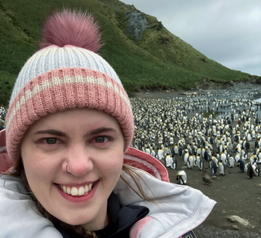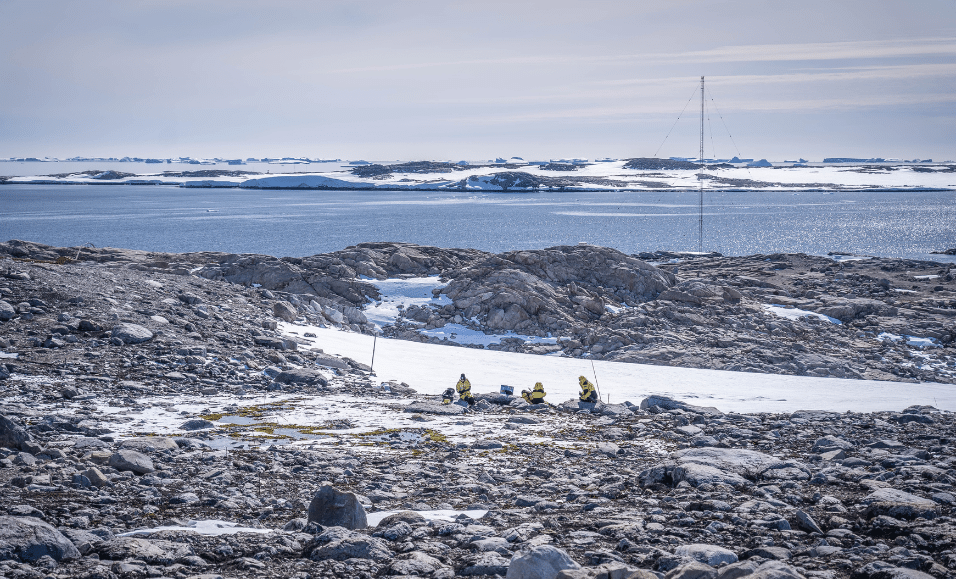Penguins, Plants and PhD Projects: A Profile on Sam Beale
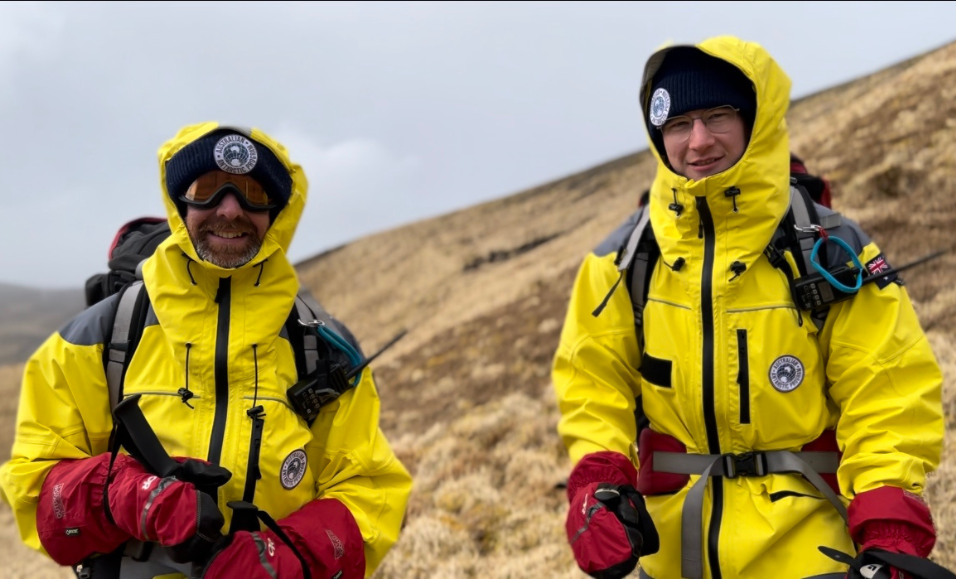
Jez Bird and Sam Beale are currently spending six months on Macquarie Island.
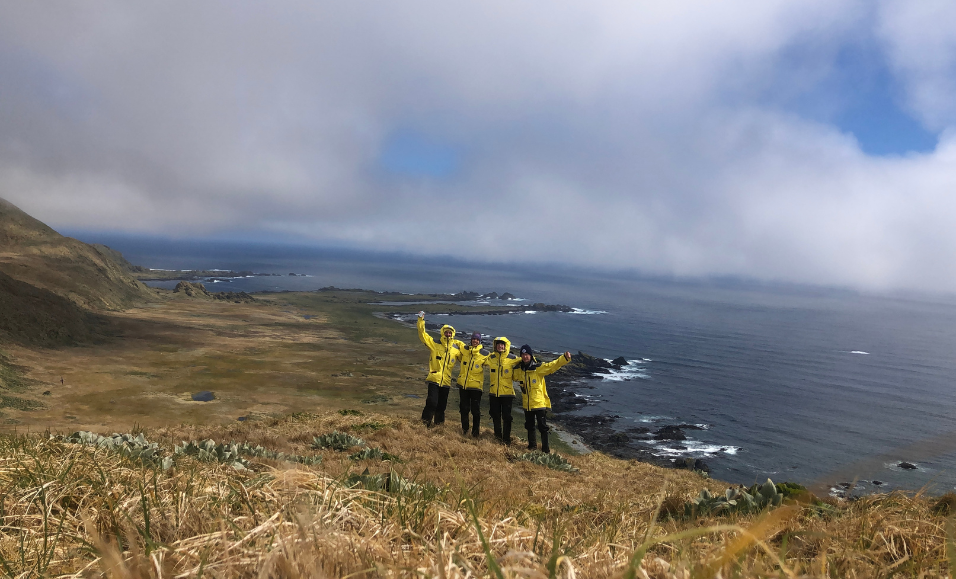
The SAEF team on Macquarie Island pose for a photo.

Sam and some curious Royal penguins.
One thing that has struck Sam since arriving on Macquarie Island is how many penguins there are.
“I never thought I would see so many penguins in my life. I can’t really get over how many of them there are,” he says.
And it’s true, the island is host to four penguins species – king penguins, gentoo penguins, rockhopper penguins and royal penguins, the later of which are endemic to the island and can be found in huge rookeries with up to 500,000 pairs. It’s an incredible sight that few get the opportunity to see.
But it’s not the penguins that have brought Sam to this island, it’s the plants.
Arriving last October, this PhD student from La Trobe University is spending six months on the island as part of SAEF’s second fieldwork season completing a variety of plant surveys.
Azorella macquariensis
The first project that Sam is working on is resurveying the Critically Endangered cushion-plant Azorella macquariensis. This plant is endemic to Macquarie Island and grows in lush green ‘mats’ on its cold and windy fellfield slopes.
In 2008, there was widespread dieback of the plant observed at 88% of the 115 sites where it grows across the island. This resulted in the species being listed as Critically Endangered. Why this decline occurred is still a mystery, but the leading theory is that it was caused by the spread of one or more pathogens.
Sam is conducting a reassessment of work completed in 2016 by another researcher called Dr Cath Dickson.
“I’ll be visiting the same sites that Cath did (and a few extras) and repeating the measurements of Azorella cover and dieback. This data will be used to better understand how the dieback has progressed and whether it varies across the island,” explains Sam.
The data that he collects will be used to test a model which aims to identify areas where Azorella might persist. Scientists can then focus their conservation efforts on these areas as the climate and environment continues to change.
“I will also be collecting samples of Azorella and the soil around it from a few key sites. These samples will be used in efforts to identify the pathogen that is potentially responsible for the dieback,” says Sam.
One of the biggest challenges of working on Macquarie Island are the weather conditions.
“I was very surprised how cold your hands can get while doing fieldwork, even when wearing gloves. Working in the cold and windy conditions can really sap your energy and inhibit your productivity. It’s quite unfortunate that Azorella like to grow in the coldest and windiest parts of the island.”

A large area of mostly healthy Azorella. Credit: Sam Beale

Healthy and unhealthy Azorella. Credit: Sam Beale
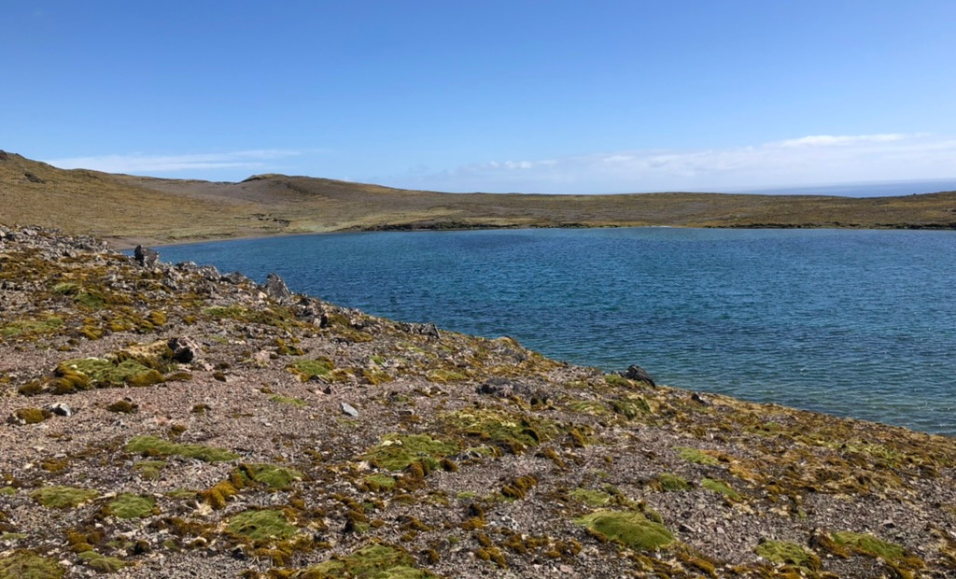
Azorella growing near a lake on the island. Credit: Sam Beale
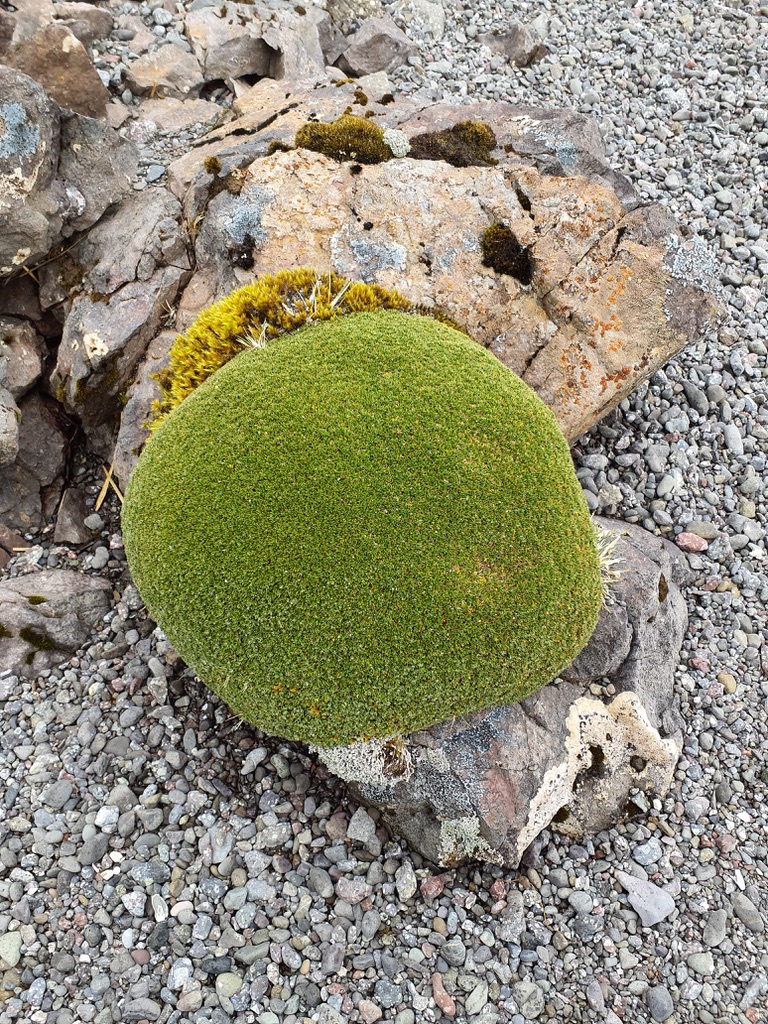
A little cushion of Azorella. Credit: Sam Beale
PhD work
The second part of Sam’s fieldwork will be focused on plant traits and how they can help us understand climate change impacts, and assuming that all goes to plan it will make up the main part of Sam’s PhD project.
“The fieldwork for this involves conducting vegetation surveys across a range of sites on the island to get measures of species abundance as well as collecting plant samples to measure a key set of plant traits, like specific leaf area, plant height and chlorophyll content,” explains Sam.
“This data will be combined with terrain and climate data from models to understand how traits vary with environmental conditions. Hopefully, this will help to better understand the functional traits of plant species in the sub-Antarctic, which is fairly underrepresented in the research, and will contribute to a better understanding of how plant communities will change in the future and how vulnerable the species are to climate change.”
Sam has also been inspired to work on developing a phenological study of some plant species on the island which will investigate the reproductive timings of plants, such as when they flower.
“I’ve spent a fair amount of time learning all the plant species as I need to ID them all for my fieldwork. The grasses are particularly hard but there are relatively few vascular plant species on Macca so it’s not too bad,” explains Sam.
“I was surprised by how small the leaves are on some plant species and immediately regretted my decision to measure them, only joking, mostly… There are also some really big leaves on the megaherb species and it’s cool to see the huge variation.”
Protecting Macquarie Island’s unique ecosystems
Sam has been struck by how the biodiversity of the Antarctic is as unique and remarkable as the landscape itself.
“The sub-Antarctic islands represent a combination of climate, biota, and isolation found nowhere else in the world,” says Sam.
“These unique ecosystems are vulnerable to climate change but simultaneously provide us the opportunity to exemplify how successful conservation can preserve our wildernesses.”
“The task of protecting Antarctic systems and conserving its biodiversity necessitates collaboration across organisations, disciplines, and borders. SAEF represents a model through which such collaboration can effectively be achieved to produce the science that is crucial for navigating an uncertain future under climate change.”
About the author
Anna Quinn
Anna is SAEF’s the Senior Communications Adviser.

